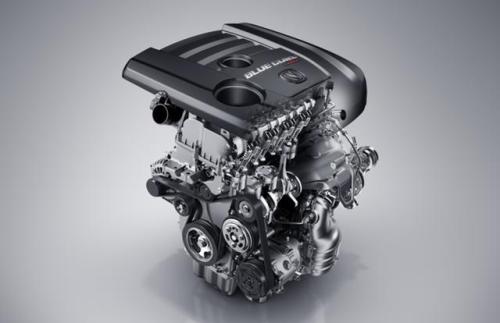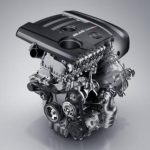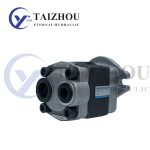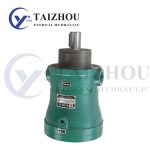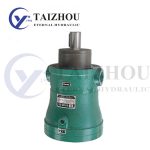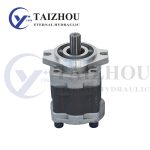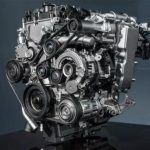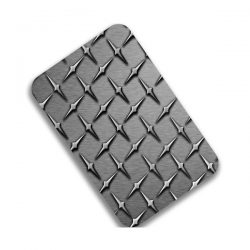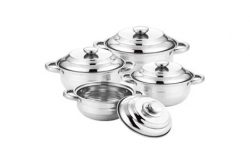Quality Motor : What Elements Do You Want To See?
The motor is not cattle? In addition to looking at power and torque, what else do you have to look at? Danfoss Motor Analysis:
At present, most car companies still aim at small-displacement turbocharged motor s, and strive to output more power with the least fuel.
Among the many brands, Changan Automobile recently announced the Blue Whale Power 1.5T high-pressure direct-injection turbocharged motor with a maximum thermal efficiency of 40%! If this motor also participates in Ward’s top ten motor selection, it is likely to be shortlisted.
What is the concept of a maximum thermal efficiency of 40%?
The thermal efficiency of the motor is the ratio of the mechanical work output by the motor to the chemical energy produced by the combustion of the motor , that is, how much chemical energy is converted into mechanical power. Under normal circumstances, the same fuel is burned, the higher the thermal efficiency, the more mechanical power is converted into, the higher the thermal efficiency, the lower the fuel consumption and the higher the fuel economy.
In terms of thermal efficiency, diesel motor s are currently higher than gasoline motor s. In the thermal efficiency of gasoline motor s, Mazda’s new generation of Chuangchi blue sky naturally aspirated motor s have the highest overall thermal efficiency, reaching 42% (achievable under some conditions, but for oil products). The quality requirements are also extremely high); the thermal efficiency of ordinary gasoline motor motor s is around 33% – 38%.
For the motor , it is very difficult to increase the thermal efficiency by 1%. Therefore, this is also the most important embodiment of the technical level of an motor .
Turbocharged motor s are generally less efficient than naturally aspirated motor s because of compression ratio limitations and more heat losses. As a turbocharged motor , the thermal efficiency of the Blue Whale Power 1.5T high-pressure direct-injection turbocharged motor can reach 40%, which is quite difficult.
Why can you achieve such high thermal efficiency?
On June 4th, Changan Automobile held the launch conference of the Blue Whale Power Brand with the theme of “China Core Drive Future” at the Chongqing Changan Automobile Global R&D Center. The PPT announced at the meeting attracted people’s attention.
Keyword 1: 350bar high pressure direct injection
In 2017, the Ford EcoBoost2.3T turbocharged motor , which was selected for the Ward Top Ten motor s, was equipped with Ford’s most advanced technology, and the direct injection pressure in the cylinder was only 200 bar. The blue whale power 1.5T high-pressure direct-injection turbocharged motor direct injection pressure in the cylinder is as high as 350bar!
The higher fuel injection pressure is beneficial to improve the fuel atomization level, accelerate the formation of the mixture, improve the combustion efficiency, and improve the motor ‘s power performance and fuel economy.
However, the use of more direct pressure direct injection technology will result in high motor operating temperatures, high combustion chamber pressures, and greater chance of knocking of turbocharged motor s, which can easily damage the motor .
To this end, Changan Automobile Blue Whale Power R&D team chooses to start from the source – the root cause of knocking is that the combustion chamber temperature is too high, Changan uses an external high-efficiency water-cooled intercooling system, and uses in-cylinder direct injection technology to reduce the temperature of the combustion chamber. This suppresses the occurrence of knocking, maximizes the performance of the motor , and improves durability and quality.
In addition, the use of an external high-efficiency water-cooled intercooler system has another major advantage. Compared with an external air-cooled intercooler, the water-cooled intercooler is more compact and has a shorter pipeline. It is possible to be close to the intake manifold, so the problem of turbine delay is also reduced accordingly.
Keyword 2: Peak torque can be reached at 1250 rpm
The peak torque can be generated at 1250 rpm, which is the best performance of the maximum torque output speed setting in mass production turbocharged motor s.
Torque peaks can be reached at 1250 rpm, which is rare in turbocharged motor s, such as the 1.6T M270 motor on the Mercedes-Benz B-Class, which achieves a maximum torque of 200 Nm at 1250 rpm and lasts up to 4,000 rpm. The BMW N20 motor also achieves peak torque at 1250 rpm and the maximum torque can last up to 4,800 rpm.
The Blue Whale Power 1.5T high-pressure direct-injection turbocharged motor is the third one I know. It can be seen that the lower the number of revolutions, the earlier the peak torque is designed and the cost is high.
It is reported that the Blue Whale Power 1.5T high-pressure direct-injection turbocharged motor uses a dual-outlet integrated exhaust manifold + twin-scroller electronically controlled turbocharger (the BMW motor is also designed), which effectively reduces the turbo lag and truly realizes ” Zero” delay.
What does it mean for consumers? If you have the opportunity to drive a car equipped with this motor in the future, you will obviously feel that when you step on the throttle, the power will arrive instantly. When encountering a traffic jam, there will never be a sudden sigh of being forced to step on the brakes when stepping on the throttle turbine.
Keyword three: low viscosity motor oil 0W-20
In general, the higher the label of the oil, the higher the viscosity of the oil. High viscosity oil can form a thicker oil film to prevent excessive wear and even cylinder pull. However, if the viscosity of the oil is too high, it tends to be counterproductive. The poor fluidity at low temperatures makes the internal resistance of the motor increase, resulting in low thermal efficiency of the motor . This phenomenon is particularly noticeable in winter.
Low-viscosity motor oil generally does not exist. Even if the cold car starts, the oil itself has high fluidity, so it will not bring great resistance to the internal operation of the motor , and the oil viscosity is low. It also reduces the internal resistance of the motor and improves the power output level. Therefore, low-viscosity oil with higher low-temperature fluidity can quickly establish oil pressure during cold start, maximally protect the motor and prevent motor wear.
This kind of motor design is obviously more suitable for the driving habits of most domestic drivers who drive only for cold start when they are traveling within 20 kilometers.
Although low viscosity oils are more fluid, they also pose another problem. Due to the increase in temperature, the oil film of the lubricating oil will become thin at this time. At this time, the HTHS (high temperature and high shear, which can be simply understood as the oil film strength), the oil index will drop significantly, and the surface of the motor parts at high speed will be at this time. It is prone to tearing of the oil film and the phenomenon of direct friction between metal and metal.
To this end, motor s that use low-viscosity oils also require a skill—advanced metalworking. motor parts produced by advanced metalworking processes can have extremely smooth surfaces, which can significantly reduce the coefficient of friction, reduce drag and reduce the strength of the oil film.
Blue Whale Power 1.5T high-pressure direct-injection turbocharged motor dares to use low-viscosity motor oil 0W-20, indicating that it has either found a world-class supplier to provide spare parts, or has greatly improved the metal processing technology in the production process of the motor . , achieved a breakthrough.
Keyword four: Jin, Jing, Jing
Of course, the above mentioned keywords are all in the hardware category, and the Blue Whale Power 1.5T high-pressure direct-injection turbocharged motor can really achieve 40% thermal efficiency while ensuring the power output. Oil strategy, whether the combustion system is agile, and whether there are related technologies like variable valve timing and variable valve lift. However, this information belongs to Changan Automobile’s internal secrets has not been announced.
When it comes to thermal efficiency, we can’t ignore the power. The combination of the two is the most ideal, only the thermal efficiency is high, the power is not enough, it is useless. The Blue Whale Power 1.5T high-pressure direct-injection turbocharged motor has achieved a power of 67 kW and a torque of 200 Nm. Considering that the motor is compatible with 48V, HEV, PHEV and REEV designs in the future, this technology is based on current technology. It has been the ultimate, and it is the world-class motor of Toyota.
In addition, the motor has two highlights, one is lightweight, reaching 3.0Nm / kg, although Changan did not announce the quality of the motor , but can be converted according to the data given, 1.5 displacement of about 100kg. Why is it lightweight? Because lighter weight helps reduce fuel consumption, reduce emissions, improve performance and increase safety.
Another highlight is the “quiet”, 60.8dB (A), which uses BorgWarner’s latest silent chain and Schaeffler silent accessory belt system. Why should the motor be “quiet”? Tan Benhong, executive vice president of Changan Automobile, told DearAuto that the motor is customized for the Chinese market. Chinese consumers care more about noise than foreign consumers, so they set “quietness” as one of the performance indicators when designing and developing.
In this way, the Blue Whale Power 1.5T high-pressure direct-injection turbocharged motor is not only fuel-efficient, the power output is equivalent to a 2.5-liter or even 3.0-liter self-priming motor , allowing for small displacement, low fuel consumption and high The output is possible.
Changan Blue Whale Power came a little late, but it has a unique advantage in technology, overcoming the small displacement turbocharged motor is not smooth, the motor training fully considers the fuel economy and reliability, in the guarantee of power level On the basis of the improvement of fuel economy, the output of power is guaranteed.
